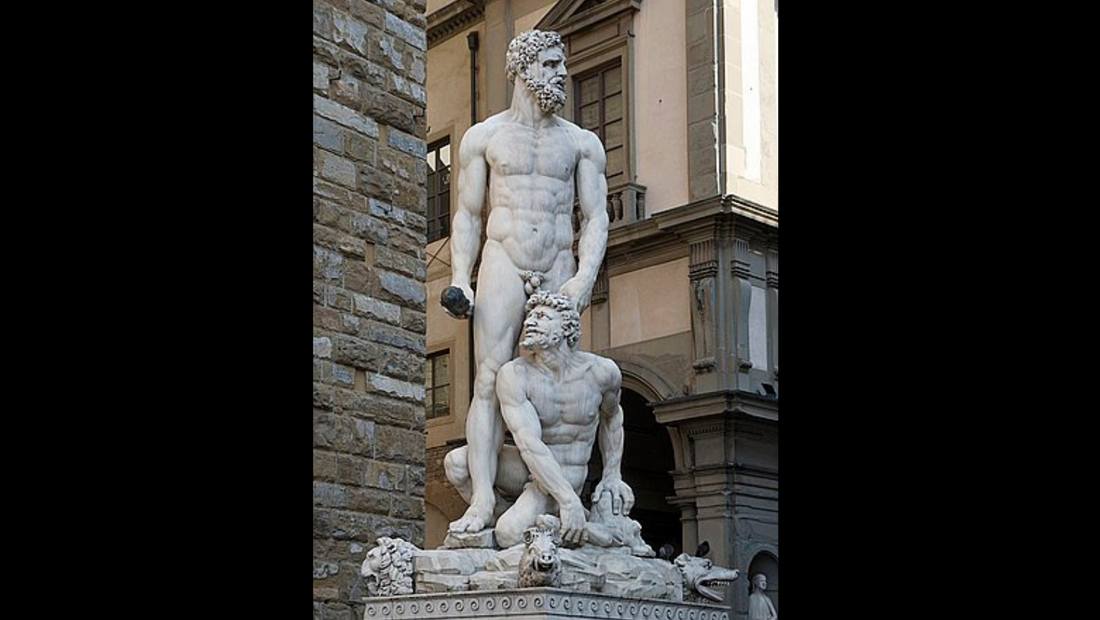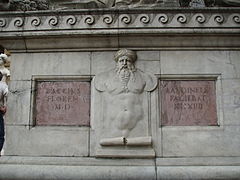Hercules and Macacus is a marble sculpture by Baccio Bandinelli located in Piazza della Signoria in front of Palazzo Vecchio and next to what is now a copy of Michelangelo's David in Florence. The work stands on a beautiful pedestal with carved low relief busts of fauns and the author's signature.
The allegorical theme is the strength and wit of Hercules overcoming the wickedness of Cacus, an episode narrated by Virgil and other poets in The Twelve Labors of Heracles.
History and description of Hercules and Cacus
When the sculpture was finished in 1533, it had a complex and problematic genesis. Initially, it had been commissioned to Michelangelo in 1505, who had just enough time to make a model, now preserved in the Museum of the Casa Buonarroti, beset by more pressing commitments he had at the time in Rome.
The commission remained only on paper; in 1525 reference is made for the first time to Baccio, then in 1528 Michelangelo was mentioned again, and on that occasion the subject was changed on his own initiative, preferring Samson and the Philistines. With the return of the Medici (1530) the commission was finally assigned to Baccio Bandinelli, who completed it in 1534.
Baccio, according to Vasari's Lives, was one of Michelangelo's most ardent admirers, a careful student of his work with the ambition to surpass him. But when he had to resign himself to not having the talent to be his equal, he exchanged his admiration for envy and hatred.
He imitated him in his choice of subjects and in gigantism, believing that Michelangelo's greatness was due to his sculptural works of great size, but his did not achieve the necessary strength, soul and anatomical perfection.
The Hercules and Cacus is considered a typical example of Baccio's attempts to surpass or at least equalize with Michelangelo, he sculpted it with the aim of being placed in the piazza della Signoria next to the sculpture of David, but the work was imbued with gigantism, with a heavy muscular mass and the results in expression and movement were somewhat awkward and the faces theatrical.
Serving to give a measure of how the sculpture was ridiculed from the outset are Benvenuto Cellini's observations on the Hercules:
If you remove the hair from the head it is not enough for a small brain [...] and the body looks like a sack of melons leaning against a wall!
The figure of Baccio, perhaps to be analyzed in the context of an artistic work "obsessed" by the famous giants of the Renaissance (Raphael, Leonardo and Michelangelo), where young artists were instructed to deal in the "manner" of the great ones, instead of striving to find their own way from the observation of nature.
It is the time of Mannerism, that perhaps Baccio felt crushed his sensitivity by the models so large, leaving aside the types of works, perhaps, more akin to him, such as the relief of which he gave a great proof in Santa Maria del Fiore.
The statue was restored between February 1994 and April 1994. It was then discovered that the truncheon of Hercules' hand was not the original, as it was made of aluminum instead of the original, which was in bronze.



